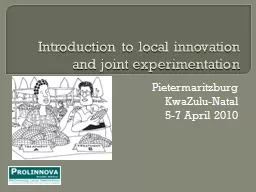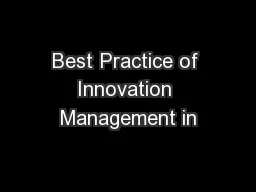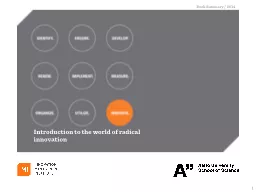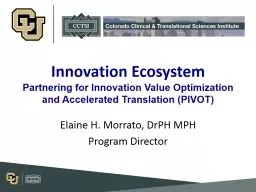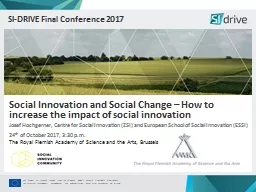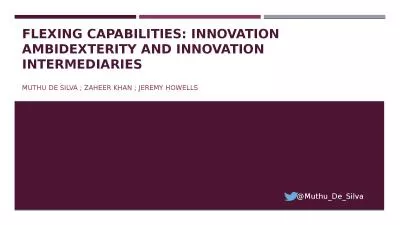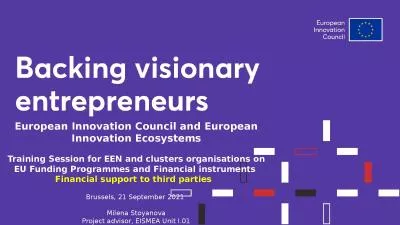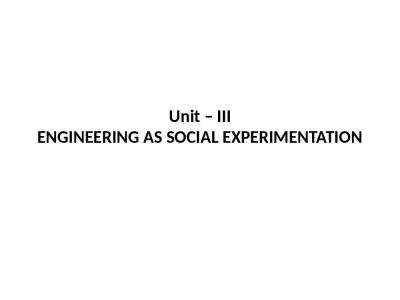PPT-Introduction to local innovation and joint experimentation
Author : min-jolicoeur | Published Date : 2017-01-25
Pietermaritzburg KwaZulu Natal 57 April 2010 What is local innovation It is the process by which farmers without support from RampD agents discover or develop new
Presentation Embed Code
Download Presentation
Download Presentation The PPT/PDF document "Introduction to local innovation and joi..." is the property of its rightful owner. Permission is granted to download and print the materials on this website for personal, non-commercial use only, and to display it on your personal computer provided you do not modify the materials and that you retain all copyright notices contained in the materials. By downloading content from our website, you accept the terms of this agreement.
Introduction to local innovation and joint experimentation: Transcript
Download Rules Of Document
"Introduction to local innovation and joint experimentation"The content belongs to its owner. You may download and print it for personal use, without modification, and keep all copyright notices. By downloading, you agree to these terms.
Related Documents

